Milk Comparison Chart – Dairy Alternatives Vs Dairy Milk Nutrition
- September 26, 2016
- Last Updated: February 22, 2023
- 30 Comments
- Nutrition
This downloadable milk comparison chart will help you to compare the different types of milk on the market and how to analyze the nutritional differences between dairy and non-dairy milk options.
As an Amazon Associate, I may earn from qualifying purchases. You can read more here on our Disclaimer and Privacy Page.
Today’s post is more of a nutrition one. I’ve been wanting to write this post about dairy vs. plant based milk options for quite some time.
I receive so many questions about it in with clients, and I think this is something we should all have some knowledge about.
One day you hear fat-free milk is the way to go, the next you hear you should be drinking full-fat, the next you hear that you shouldn’t be drinking dairy milk at all.
As a non-diet dietitian, I’m not here to sway you towards one milk choice or another. I just don’t want you to be duped by diet culture.
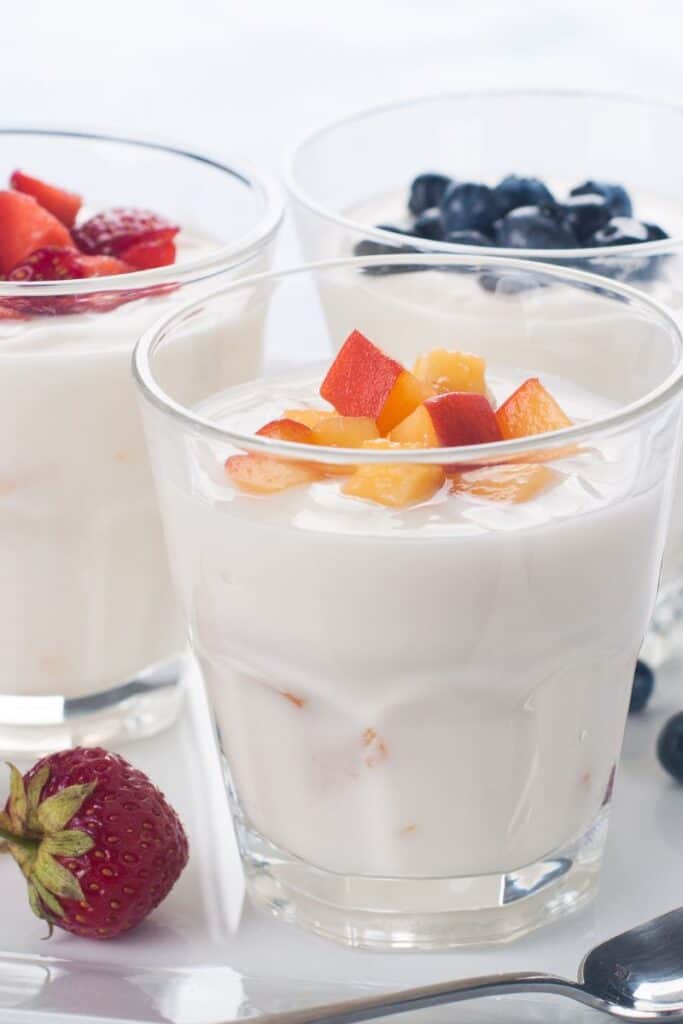
Rather, I want to inform you about the pros/cons of each and empower you to make the best decision to fit your nutritional needs, food preferences and lifestyle.
Ultimately, there’s not a “wrong” choice. Among the plethora of choices you have at the grocery store, a lot will depend on your tolerances or insensitivities, taste preferences, and price.
While I do have my own personal opinion (and unique nutrition needs), I’ve included some objective facts and science in here as well.
So, let’s talk a little about each.
In This Article
Dairy Milk Nutrition (Cow’s Milk)
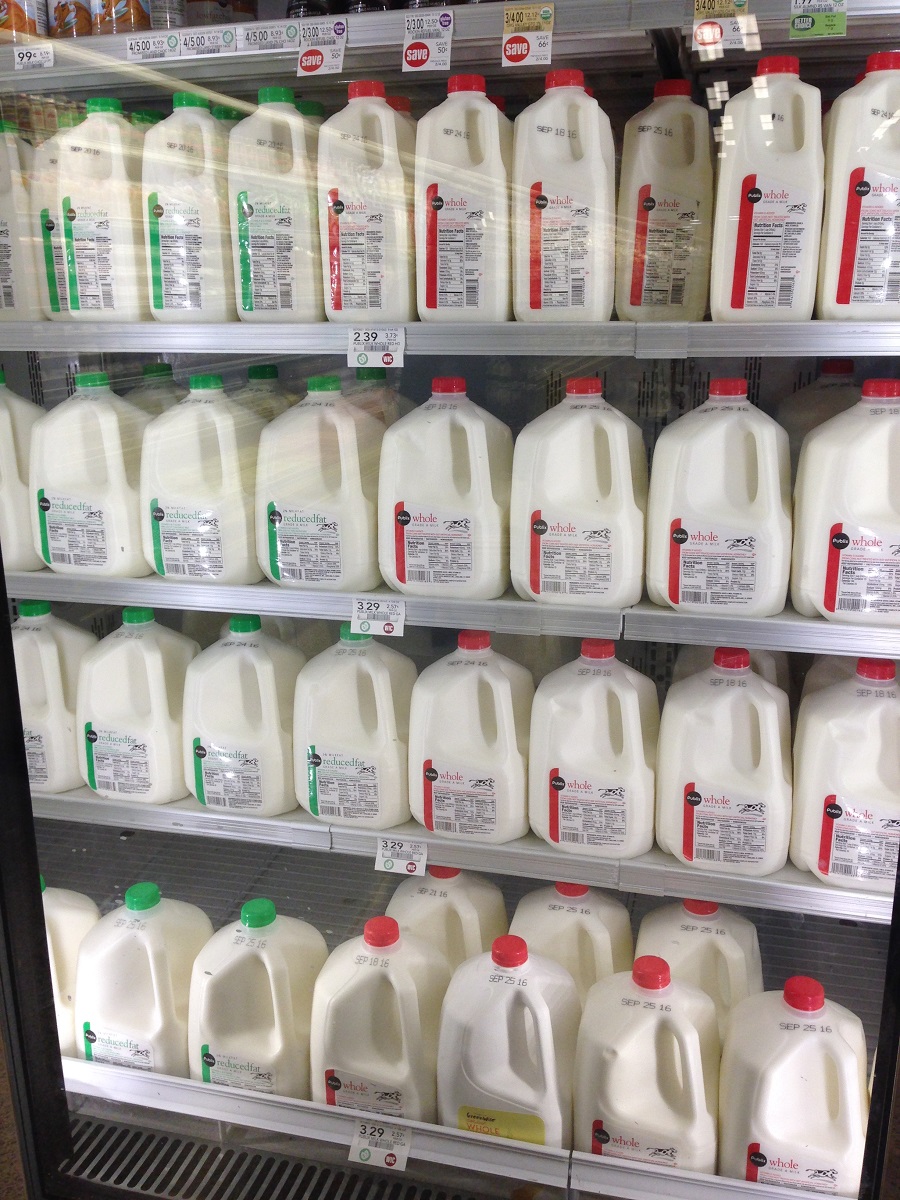
Cow’s milk has one ingredient: milk. There are no added sugars.
The sugar in milk is a natural form of sugar from the lactose, which is composed of simple sugars, glucose and galactose.
Dairy milk is a fantastic source of calcium (30% RDA) and Vitamin D (20% RDA), which are both involved in bone health. We need Vitamin D to absorb calcium. Vitamin D is also a hormone involved in a slew of other functions, like immunity and mood.
Dairy milk is also naturally high in potassium, phosphorus, Vitamin A and B vitamins (particularly riboflavin).
However, cow’s milk may not be for those who are dairy or lactose intolerant, or those following a vegan lifestyle.
There are several other milk alternatives for those people – check out this vegan breakfast meal prep resource for some ideas.
Nonfat Milk Nutrition vs. Low Fat Milk Nutrition vs. Whole Milk Nutrition
Calories and fat vary depending on the type of cow’s milk you choose.
The amount of protein, carbohydrates, and nutrients in all milk will be the same as the rest of dairy milk nutrition doesn’t vary.
No matter what type of cow’s milk you are drinking, 1 cup provides 8 grams of protein.
The % fat refers to how much fat is in the milk by weight.
- For a cup of skim or non fat milk, there are 80 calories and virtually no fat (0.3%).
- For 1% or lowfat milk, there are about 100 calories per cup, while 2% milk (reduced fat) has about 120 calories.
- Whole milk is about 3.5% fat (8 grams of fat, including 5 grams of saturated fat), and has about 150 calories per cup.
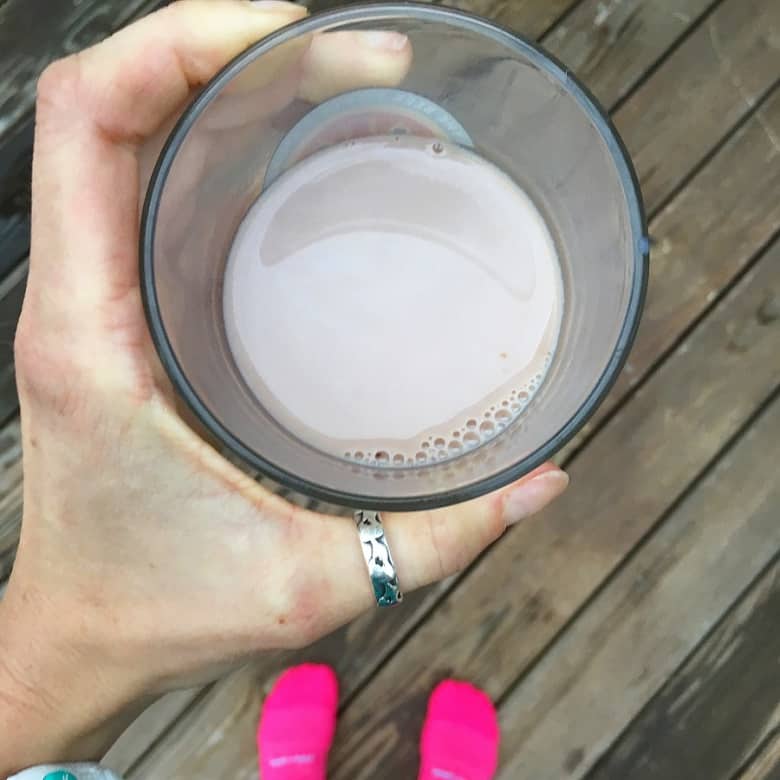
About one third of the fat in milk is monounsaturated, while most is predominantly saturated.
However, there are some polyunsaturated and other minor fatty acids present as well. More nutrition facts here.
Whole milk is the closest resemblance to what comes directly from the cow, so it is technically the “least processed.”
The lower fat milk options have gone through some processing to obviously remove the fat. People think the lower fat versions have more added sugar, which is not true.
If you compare a whole milk nutrition label to a low fat milk nutrition label, you’ll see that companies normally fortify (add back in) lower fat milks with Vitamin A and Vitamin D, which are lost while skimming the fat out.
Both options are nutritionally equivalent otherwise. Dairy milk is also a great source of leucine!
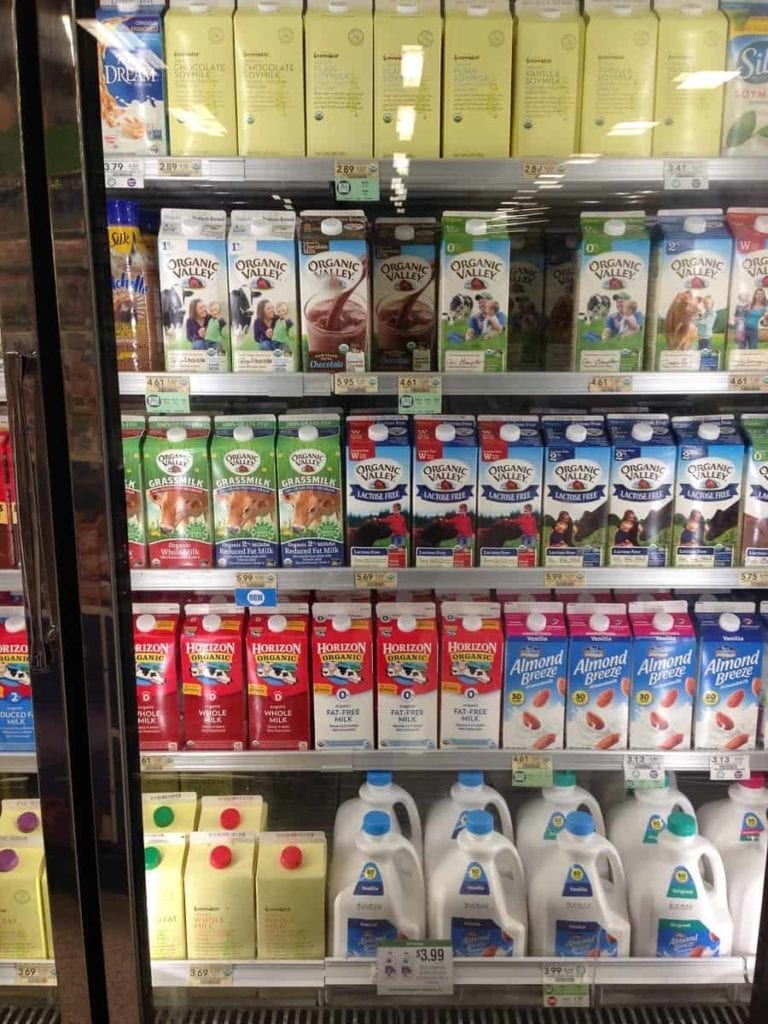
What Does the Research on Dairy Milk Say?
There is a debate over which milk is better for you, and in my professional opinion, you have to take it all into context.
If you’re drinking whole milk and trying monitor your cholesterol or triglycerides, then maybe you can decrease to a lower fat content, like 1 % or even 2% without sacrificing taste and satisfaction.
Going from whole milk to skim milk is not a recommendation I would typically make because that’s pretty drastic.
On the other hand, if you’re looking to build muscle mass, maintain weight or increase your fat intake, then let’s move your milk fat content up. Each person’s unique situation is different.
Another thing to consider is how long the milk will keep you satiated and satisfied.
Typically, the higher the percentage of fat, the longer the milk will keep you full because fat is an important macronutrient for satiety.
Whole milk and full-fat dairy products have been shown in the research to be better for fertility.
However, drinking fat-free milk has been associated with a reduced risk of diabetes and a decrease in blood pressure, so each person’s situation may be unique.
My motto is that you should enjoy your food without any rules or limitations, so if you really enjoy the milk you’re drinking, maybe we can make changes elsewhere.
Almond Milk Nutrition
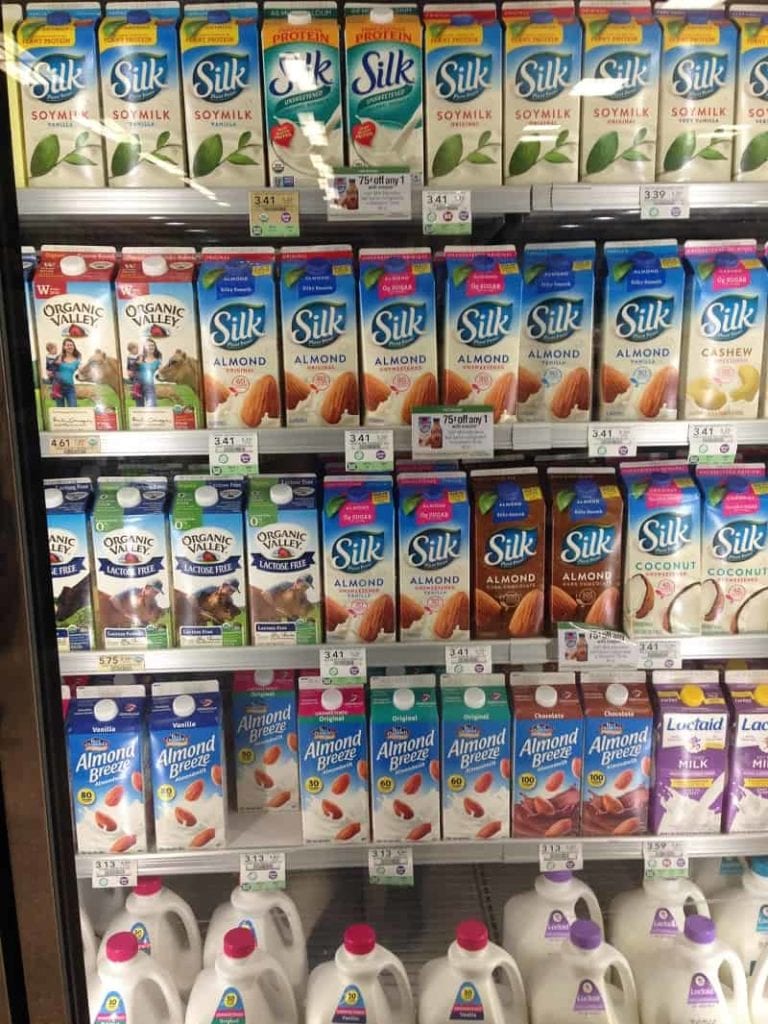
Almond milk is a great alternative for those who are vegan, or lactose or dairy intolerant. There is no saturated fat in almond milk since it is not an animal product.
However, I prefer to stick to the unsweetened versions.
Most brands typically have unsweetened vanilla available. Some sweetened versions can have up to 16 grams of (added) sugar per cup, which contains no useful nutrients.
Another nutritional con of almond milk is that it is a poor source of protein. It will not keep you full. It also has a longer list of ingredients.
Here’s a sample list of ingredients from a store brand almond milk: Almond milk (filtered water, almonds), calcium carbonate, natural vanilla flavor with other natural flavors, sea salt, potassium citrate, sunflower lechithin, gellan gum, vitamin A palmitate, Vitamin D3 and D-Alpha-tocopherol (Natural Vitamin E).
Almond milk does provide 45% of your daily allotment for calcium, 25% of Vitamin D, and 20% of your Vitamin E needs.
Remember, to absorb Vitamin D, we need to take it with fat as it is a fat soluble vitamin. Almond milk also provides a fair amount of potassium, but is only half of what cow’s milk offers.
Note that there may be some variability between brands and even sweetened or unsweetened. Many almond milk brands on the market now have added protein as well.
Coconut Milk Nutrition
Coconut milk is another dairy milk alternative for those who are vegan, lactose or dairy intolerant. Like almond milk, it is a poor source of protein and does have a longer list of ingredients.
However, unlike almond milk, it does have saturated fat in it. Just be aware that saturated fat in and of itself is not necessarily a bad thing, but take it into consideration with other sources in your diet.
The Dietary Guidelines do recommend limiting saturated fats to less than 10% of your daily calories (note: plant foods are free of saturated fats).
Coconut milk does provide 45% of daily calcium needs and 25% of Vitamin D. Coconut milk does not have any potassium.
Soy Milk Nutrition
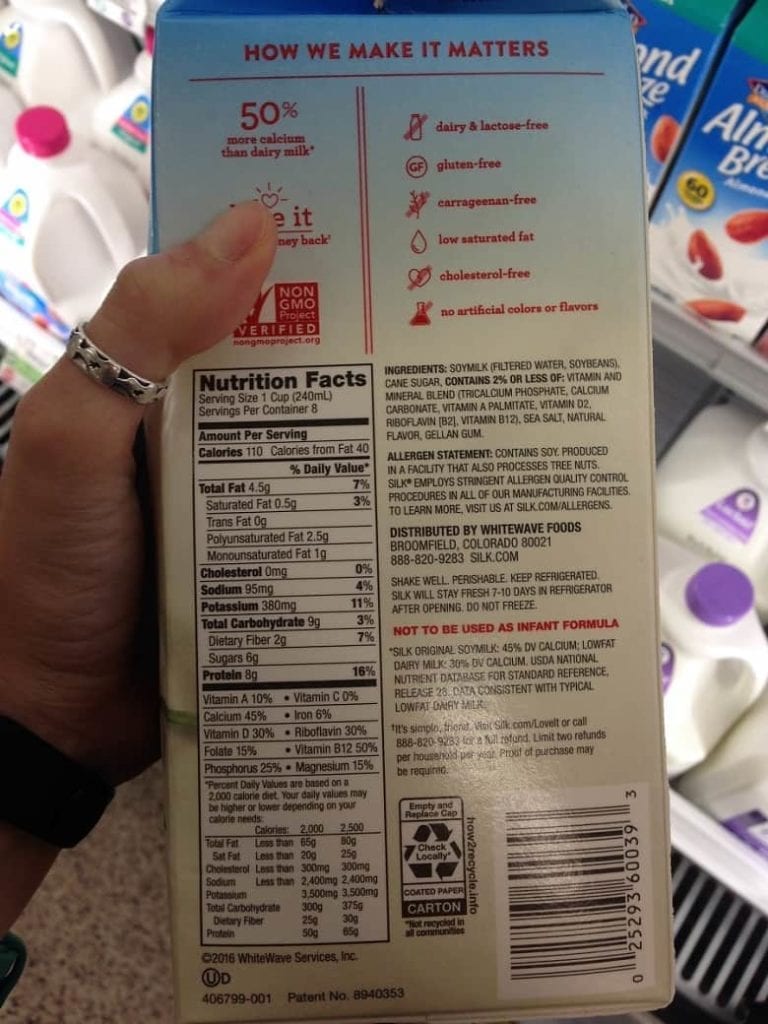
Soy milk is another option for those who are vegan, vegetarian, or dairy or lactose intolerant. Soy milk is comparable to cow’s milk in terms of protein and nutrient profile.
One cup provides about 45% calcium and 30% of Vitamin D needs.
Since it is a plant protein, there is virtually no saturated fat. It’s very low in sugar (unless you buy a sweetened version) and similar in calorie content to dairy milk.
Pea Protein Milk Nutrition
Pea protein milk is a more recent addition to the market of plant-based milks, made from split yellow peas. It can be a great alternative for those allergic to or avoiding dairy, lactose, nut milks, and soy products.
One cup of pea milk has a similar amount of protein as soy and cow’s milk, around 8 grams.
It offers the highest amount of potassium among dairy-free options, and even has more than cow’s milk (450 mg in pea’s milk vs. 370 mg in cow’s milk).
Similarly, pea milk offers 45% daily value of calcium and 30% of Vitamin D. Pea Milk is also enriched with omega 3-fatty acids, is cholesterol free and low in fat.
Oat Milk Nutrition
Oat milk is one of my personal favorites, in addition to cow’s milk. It has a creamy, frothy texture and goes really well in coffee.
Oat milk is made by soaking steel cut oats or whole groats in water and straining them.
Like rice milk, oat milk has a higher carbohydrate content than dairy milk (and all of the other milk alternatives listed here). A cup of oat milk does provide some protein (about 3-4 grams, so half of what dairy milk, soy milk and pea milk provide).
Oat milk has lower amounts of potassium, though most on the market are also fortified with Vitamin A, B-Vitamins, calcium and Vitamin D.
Here’s a little chart I made that you can pin or save for later!

Dairy and Non Dairy Milk Comparison
A product being “dairy-free” doesn’t equate to it being healthy or the best option.
Plant-based milks have their cons as well but can also be almost equivalent to dairy milk nutrition.
Keeping track of added sugars, protein, calcium and Vitamin D is important when choosing your milk. If your drink of choice is low in protein, make sure you are pairing it with other protein sources.
For example:
- If it’s cereal, add some nuts, seeds or nut butters. Or, have some hard boiled eggs on the side.
- If it’s oatmeal, add nuts, nut butters, seeds, yogurt, protein powder or egg whites.
- If it’s a smoothie, you could also add any of the above. Personally, I like the taste of both almond and coconut milk, and sometimes prefer to cook my oatmeal with them.
But, I’ll usually add in some greek yogurt, protein powder, or peanut butter to get that protein.

When it comes down to it, they can all be a fine choice depending on your situation. I am a big dairy lover so I do try to get two cups of dairy in a day – usually, it’s some cow’s milk and some yogurt.
Currently, we have 2% milk in our house, but I normally switch among the different milks every few weeks.
I hope this clears up some of the confusion among the different types of milk. I typically recommend going for the original or unsweetened versions.
That is one thing that is consistent across the board!
What milk do you prefer?
Are you loyal to a particular brand?
Support Bucket List Tummy


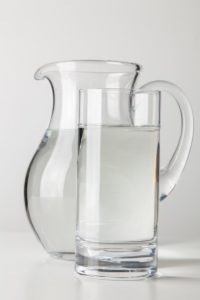
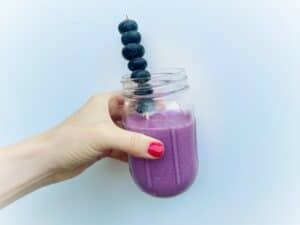

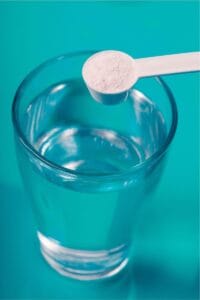

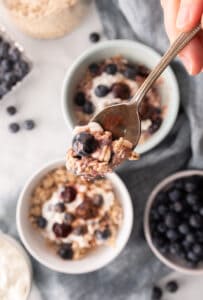

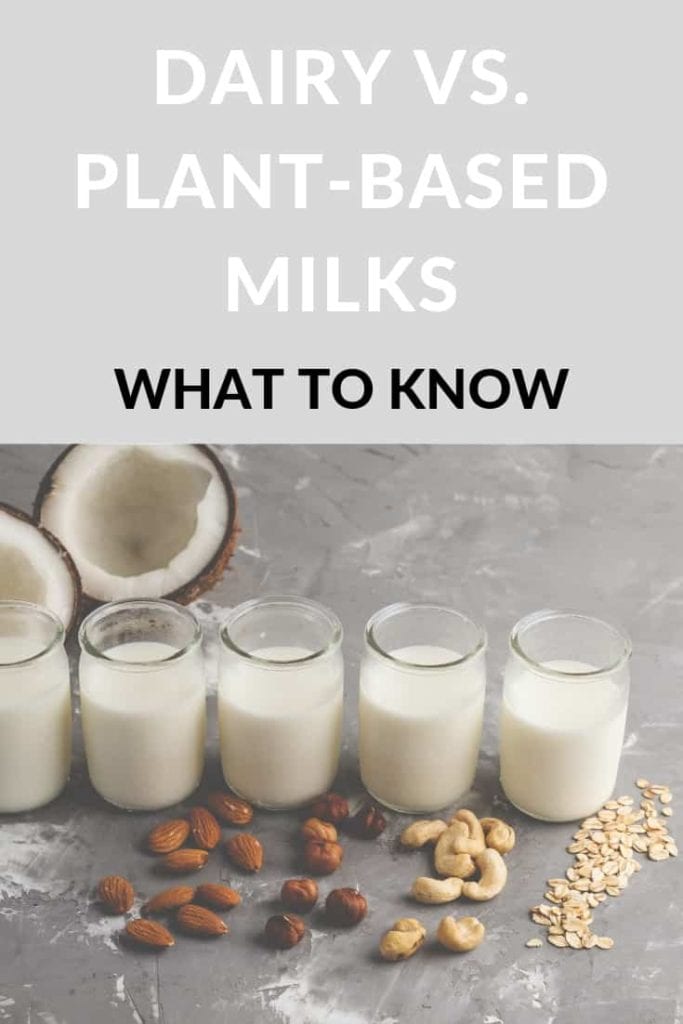


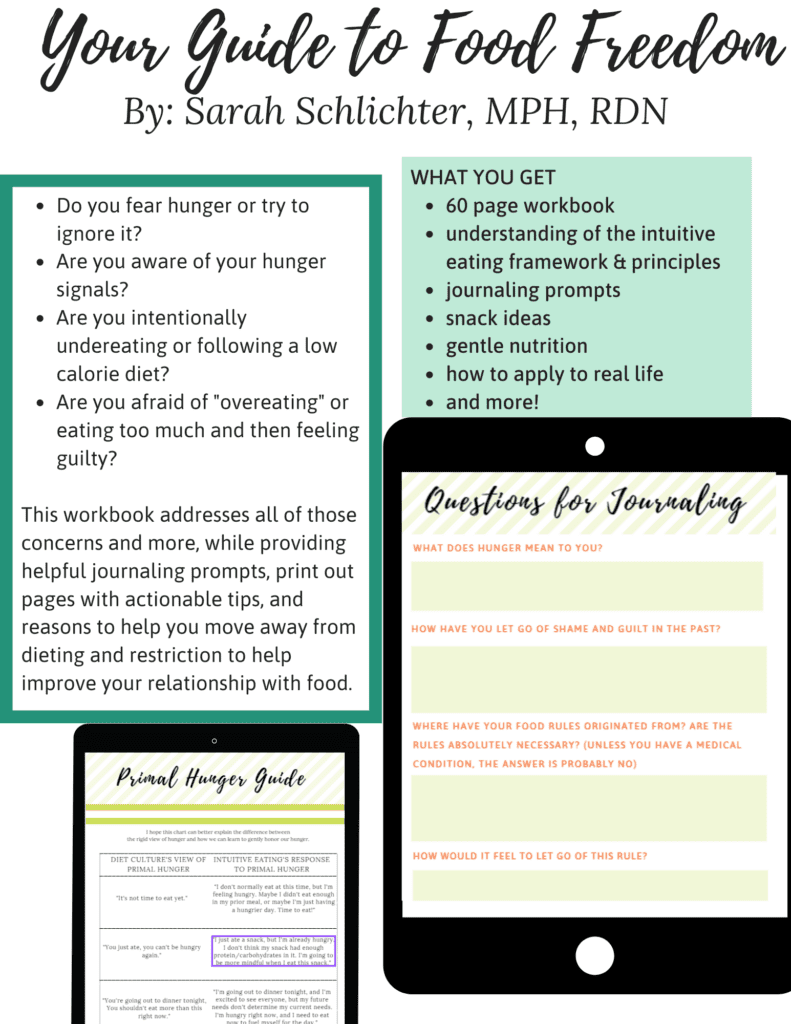









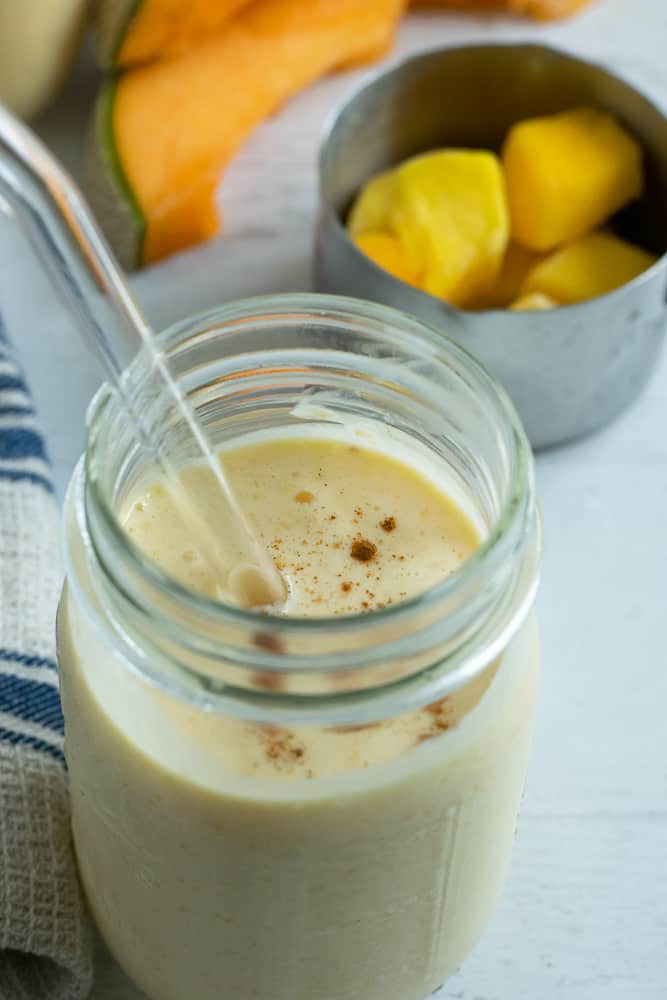



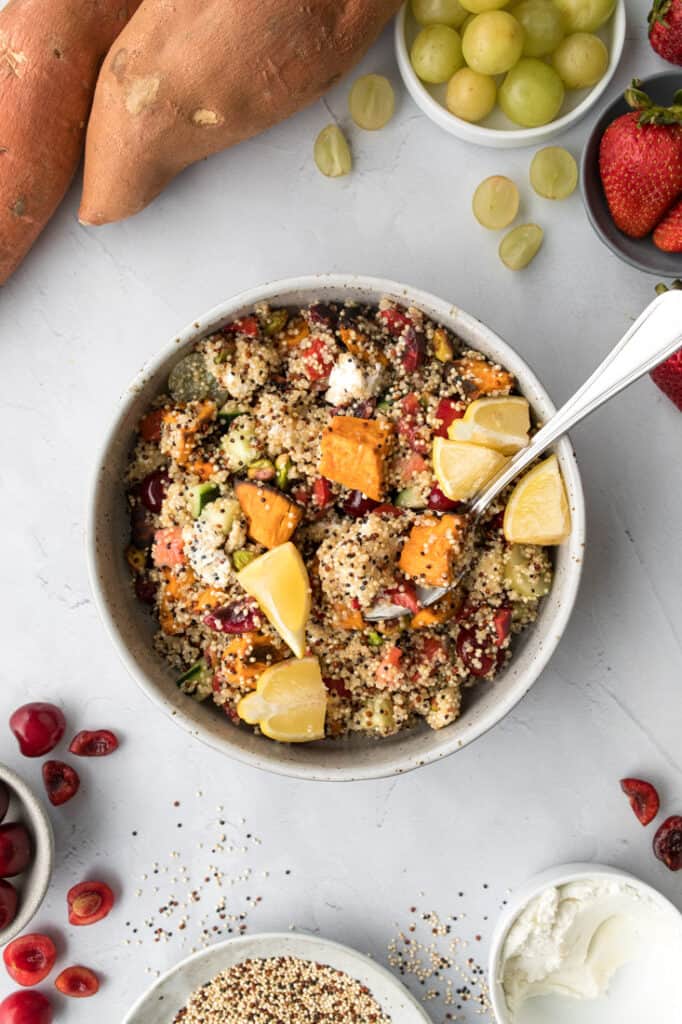

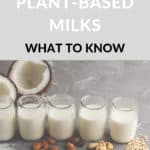
Like This Content?
Support Bucket List Tummy